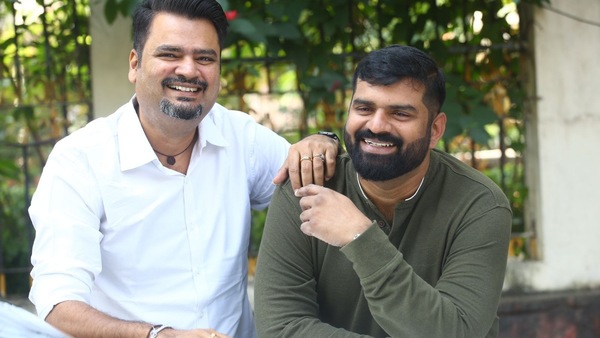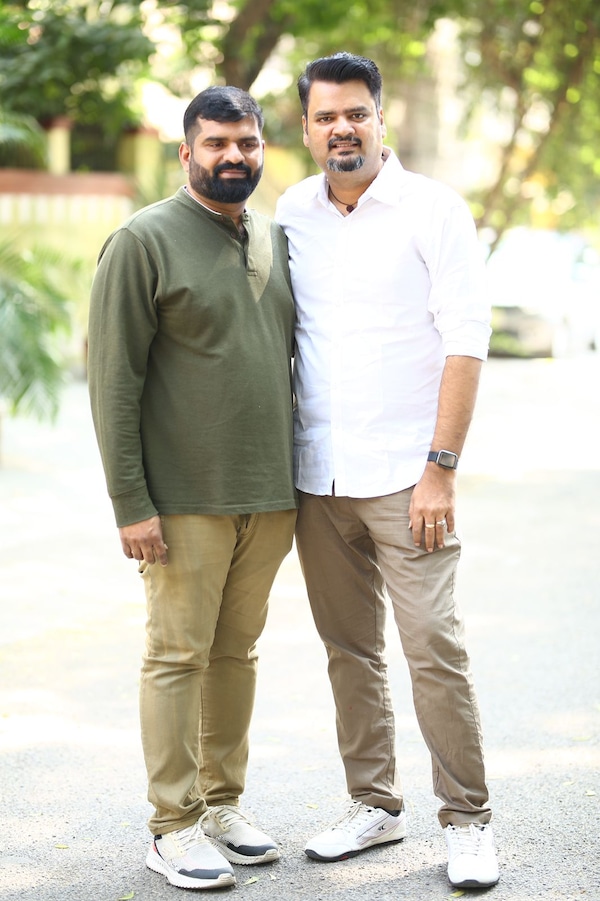Exclusive! Yashoda directors Hari Shankar, Harish Narayan: Samantha didn’t want us to compromise on the film at any level
The director duo discusses what went into the making of the biggest film in their careers and why they’re confident about it

Last Updated: 06.08 PM, Nov 09, 2022
Hari Shankar was an assistant director, working as a part-time editor for a few projects when he met Harish Narayan for a short film project. The editing table was a perfect meeting ground for the duo to share each other’s ideas, review them and realised they shared similar wavelengths and tastes in cinema. Eventually, they decided to tell stories together for the big screen. “We didn’t want to do a regular 9-5 job. Filmmaking is like military training for us. Though it’s tough, soldiers do their job and come out satisfied regardless of rain, wind, desert or any extremes,” they say.
While Hari learnt the ropes of filmmaking being an assistant to several leading directors, Harish was an IT professional when the film bug bit him. After making a mark in Tamil cinema with their fascinating experiments like Orr Eravuu, Ambuli (3D) and Jumbulingam (3D), they’re trying their hands with a multilingual Yashoda, easily the biggest project in their careers. Ahead of the release of the thriller starring Samantha, Varalaxmi Sarathkumar, Unni Mukundan, they catch up with OTTplay.com for a quick chat.
Handling the big leap - from indie experiments to a multilingual mainstream film
Though Yashoda’s scale is huge in terms of content, the challenge was akin to our first film Orr Eravuu (a first-of-its-kind point-of-view film) where there was no protagonist or antagonist. It wasn’t only hard to make that film but also took a lot out of us to release it in theatres. Ultimately, it’s all about communicating your idea to audiences and Yashoda’s script merited that kind of budget, the bigger cast and crew. It was solely the producer’s choice to make it on a lavish canvas. He felt the film had the potential to go global. When we wrote it, it was conceived as a small film because we didn’t know if Samantha would say yes to it.
Developing the script out of a newspaper article, roping in Samantha
The concept is very new even within the norms of a mainstream film. There’s more to the film beyond surrogacy and we believe that’s the USP of Yashoda. We discussed the idea over a Zoom call during lockdown when we had a lot of free time. The film is based on a shocking incident we read on the internet and was developed into a script. We structured the emotional aspect first and added other variables later. There are many surprises and shocks in the narrative. The core idea revolves around motherhood and it’s easily the most emotional movie we’ve made to date.
Senthil, the executive producer of the film, wanted to initially produce the earlier version of the story but as it evolved he felt that it had to be made at a bigger scale. He suggested we approach Sivalenka Krishna Prasad of Sridevi Movies. We met in person in Chennai in 2020 and took the idea forward. There are different shades to the story and Samantha handled it very well. We heard a yes to the narration in the 25th minute and she said ‘I am getting goosebumps already.’ Samantha never let us know about her health condition during the shoot.
Even when she gave a superb shot for an action sequence one day, we only realised during ‘pack up’ that she had a fever. As an actress, she never lets her problems affect the film. Whenever she is in the middle of a heavy scene, there’s silence on set for a few minutes. She doesn’t use glycerine, doesn’t talk before the shot and lifts her hand when she’s ready. She takes care of continuity meticulously, even using a pencil to mark the area where she enters and exits a scene. She was keen on ensuring the best output for Yashoda at every level, including VFX and didn’t want us to compromise.

The challenge of making a Telugu film without knowing the language fully
Writers Pulagam Chinnarayana and Challa Bhagyalakshmi helped us with the flow and conveyed the essence of the story seamlessly. The narrative didn’t undergo much change even though we ideated this as a Tamil film first. The writers added a lot of nuance to the story and we had a good conversation before the film went on the floors. We intentionally brought in one male writer and a female writer to ensure the soul of the story remains intact. Bhagyalakshmi garu knows to read and write Tamil, Telugu and that made our jobs easier. Her input brought a new female perspective to the script.
Most of the crew knew Telugu and Tamil. Mani Sharma hugged us ‘vaanga thambigala..’ and gave us the liberty to say no to a tune if we didn’t like it. Most Telugus speak Tamil well. Creative director Hemambar Jasti told us we had a hit film after listening to the script and supported us. He and Pushpa Bhaskar ensured the perfect casting for the film. We picked actors according to the Telugu audience’s taste. There’s no barrier among audiences and they’re more aware of the nuances. We have a few fresh talents who’ve done an amazing job.
Bringing Varalaxmi Sarathkumar on board...
We narrated the story to Varalaxmi over a Zoom call and after listening to the plot, she didn’t speak for a few minutes. We weren’t sure if she liked the story at all. She only asked, ‘where are you getting these weird ideas from?’ We responded, ‘is that a yes?’ and she nodded in agreement. All she wanted was the film to be picturised just the way we narrated it. You get to see her in a different colour and she carries the elite look with elan.
Ideating the medical facility for Yashoda and the contribution of art director Ashok
The facility’s name is Eva for a reason and we wanted the clinic set to be super grand. We visited several star hotels in Hyderabad but couldn’t relate to them and realised we needed more breathing space and freedom to shoot. We asked the producer for a set and the art director Ashok came up with sketches. The production design was exactly the way he sketched it and shooting on set was the best thing to have happened to the film. It ensured that we didn’t compromise on the ambience and the visual texture. When you make a pan-Indian film, its universe can’t restrict itself to a particular region. Sukumar sir played with colours so well.
The experience of making two 3D films - Ambuli and Jumbulingam
Both of us loved My Dear Kuttichathan. After growing up, we wanted to make something like that in our language. That film had come in the 80s and we realised there weren’t many 3D films in Tamil in 30 years and we wanted to jump the gun. Luckily, I met Dan Sim in India to coach us for a project which didn’t take off. We found a new 3D camera in Panasonic and wanted to make a 3D film with a desi folk tale. It’s challenging to make 3D films on a commercial level.
On the audience’s love for thrillers lately
We’ll answer this from the perspective of a book. If you read a romantic novel, you do it at your leisure. However, for a thriller, you turn the pages with great enthusiasm and have the urge to complete it quickly. The exposure to thrillers can also be attributed to the rise of OTT during the lockdown.
Subscribe to our newsletter for top content, delivered fast.

